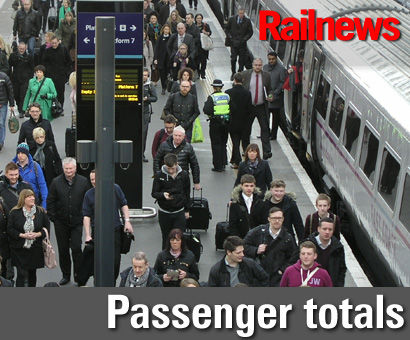NEW figures published by the Office of Rail and Road reveal that more people are now travelling by train than at any time since the early 1920s.
The measurement, of individual journeys, shows that passenger figures are now challenging totals not seen in peacetime since dancing the Charleston was the latest craze.
The official total for individual journeys in 2014-15 was 1,393 million, compared with just 589.5 million in 1995-96. The rise in the nineteen years since then amounts to 136 per cent.
Until this year, the highest total for individual journeys since the 1920s had been achieved in 1945, when ‘demob’ traffic of forces personnel returning home from wartime service briefly swelled the total to 1,372 million.
Before that, the last comparable figure occurred as far back as 1923, when 1,319 million journeys were recorded jointly by the ‘Big Four’ companies. But the railway network then was much larger – roughly twice the size – which means that the system is now by far the busiest it has ever been, with passenger kilometres in 2014 provisonally calculated as 61.8 billion by the ORR. Such a figure is easily an all-time record, because the length of the average rail journey in the 1920s was much shorter.
The latest figure of 1,393 million has been calculated as ‘end to end’ journeys, while the even higher figures often quoted by the industry and government come from the modern ‘Lennon’ database, which counts each ‘leg’ or train involved. This exaggerates the total by more than a fifth, so that the latest Lennon figure now stands at 1,654 million, which is also a new record.
The transport secretary Patrick McLoughlin told Railnews that the government is taking action. “We are building 3,000 new train carriages, and laying more tracks,” he said.
Network Rail itself is tackling the challenge in more than one way, pointing out that reinforcing the infrastructure by simply laying more track or adding platforms and loops is expensive. Although new track and related infrastructure continues to be installed in strategic places, Network Rail is also pointing to the ‘digital railway’ as an alternative and more effective solution.
New systems of traffic management and signalling can improve capacity dramatically by allowing trains to run more closely, but still in complete safety. One digital railway project is aimed at improving capacity on the heavily congested ‘Wessex lines’ from London Waterloo, while the plan to run Thameslink trains through central London every 2.5 minutes from 2018 would probably not be achievable without automatic train control.


